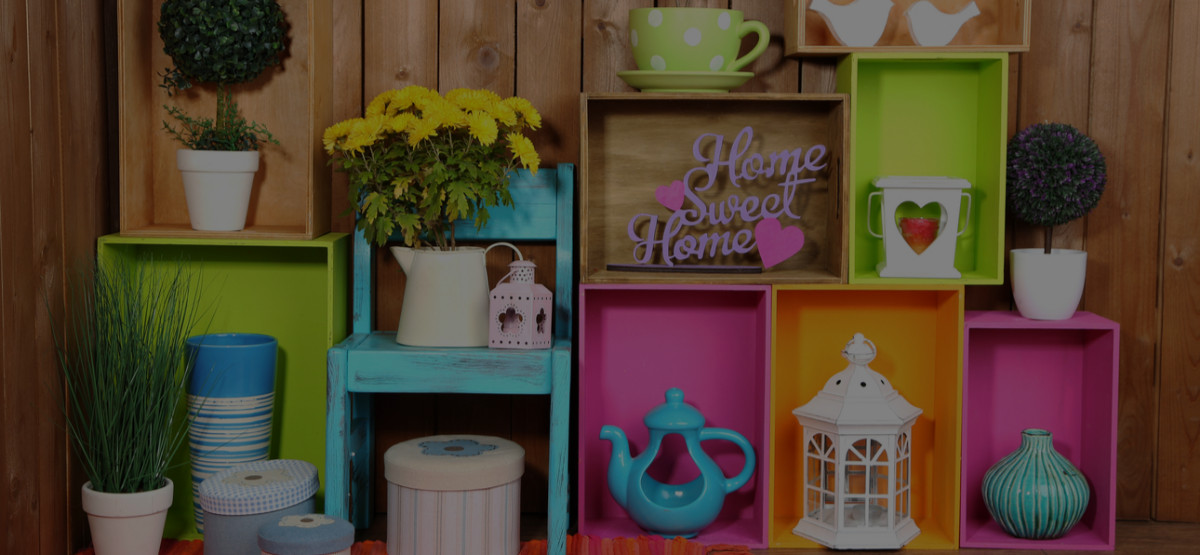Christina Kittelstad is a tutor of QC Design School and an accomplished color consultant, home stager and painter whose work has been featured on HGTV’s show House Hunters. She is the owner and lead color consultant for Spiral Design Color Consulting. She’s best known for creating beautiful, functional spaces through the use of color and creating a sense of style and personality that’s as unique as each of her clients.
In my many years of being a professional color consultant, I have worked with all kinds of clients. I have seen it all when it comes to what works and what doesn’t while working with color. I have had the pleasure of witnessing the good, the gorgeous, the bad and the absolute ugly. It’s been an adventure for sure!
Here are 8 cringe-worthy mistakes that color consultants see ALL the time.
#1. Choosing a Boring Color Scheme.

Nothing is more boring than choosing a color palette of neutral colors and then proceeding to paint every surface the same, usually because a client is too nervous to take even the smallest design risk. Oftentimes this means choosing a set of neutrals with very little contrast, and when the painting is all said and done, the client can not visually tell that there is a variety of colors on the walls.
Make sure there is always enough contrast when sticking with a neutral palette and don’t be afraid to add in a pop of understated color with clients that aren’t ready for a lot of colors.
#2. Painting a Popular Color Scheme rather Than Choosing a Color Scheme That Reflects a Client’s Personal Style.
As a color consultant, I strongly believe every client deserves to have a home they fall in love with every single day. That means choosing a beautiful color scheme that reflects who they are and what they love.
Too often clients shy away from developing their own design aesthetic and choose what’s popular instead. While this is a safe way to go, and it has its place such as when a client is selling, but it’s not authentic and clients won’t be satisfied for long because it won’t feel comfortable.
#3. Painting an Outdated Color Scheme

I believe a client should choose colors they love no matter what the trends say. However, there are some schemes that are way overdone and need to move on.
Here are a few that don’t work well together and make a space feel outdated and tired:
- Black and Navy
- Brown and Gray
- Teal and Brown
- Black and Yellow
- Tan and Green
- Red and Black
#4. Painting Every Room a Different Color Scheme
A client may have a solid color palette to work from, but they lay it out in a way that is jarring or unbalanced. One example is painting every room with a different scheme. This is visually confusing and prevents a space from having the correct flow of color. It feels disconnected and busy, and does not encourage relaxation.
Limit any obviously different or bold color schemes to bedrooms such as children’s spaces, while keeping a flow with ONE scheme throughout main living areas.
#5. Using “Holiday” Color Schemes

No one wants their home to be known as the “Christmas House” or the “Halloween House”. Choosing colors that are traditionally reserved for holidays or sports teams are always a bad idea!
I have had many clients over the years who request a green exterior house with a red accent on the front door or shutters. One solution is to paint a subtle earth-toned sage green or gray-green, then accent with a rusty or burgundy red. Stay away from bold, fully saturated colors for exterior or large interior areas, unless it’s as an accent.
#6. Overusing Accent Colors
Know when to call it quits when it comes to using accent colors on interior spaces. Over the years, so many of my clients fall in love with a beautiful accent color that I have specified, but then want to paint it EVERYWHERE. An accent color is just that – an accent color, and its meant to be used in a subtle way or as a focal point.
Teal, navy, charcoal, and burgundy can be beautiful in small doses such as a mantle wall, dining room ceiling or bedroom wall, but when overused, they will close off and darken a room that was otherwise full of beautiful light.
#7. Skipping Color Testing

This is the MOST important step in the color selection process and will make or break a paint project. I’ve seen SO many clients choose colors, and then because they are anxious to get it done, they give the painter the go-ahead. This ends in disaster and could definitely be avoided.
Color testing with paint samples gives clients the opportunity to view their chosen colors in a variety of lighting and can then be adjusted as needed before paint day. Always stress the importance of going through the entire process and doing the prep.
#8. Not Working with a Professional Color Consultant
More times than I can count, I have had clients call me in a complete panic. They have attempted to choose a color scheme for their home by themselves, and ended up overwhelmed, stressed out and have spent way more money on paint samples than they care to admit. They have no idea what to do next, and have ended up back at square one.
Doing a project right includes hiring a professional who can guide you through the steps while saving SO much time and money. The initial investment is worth every penny to get a beautiful color scheme chosen the first time that will be enjoyed for years to come. Not to mention, the additional resources that a color consultant provides (such as professional painter referrals and color tools) will make your life much easier!
